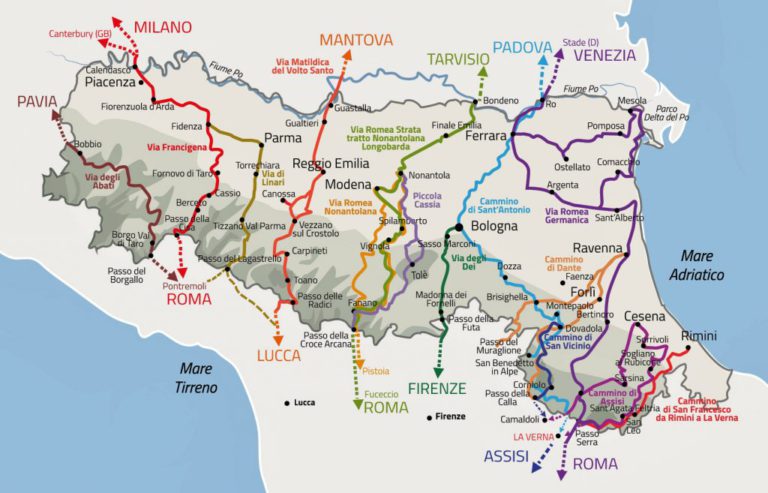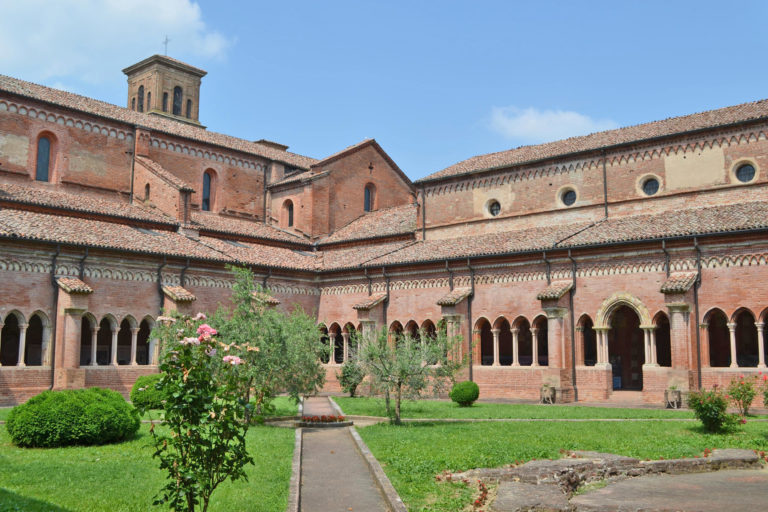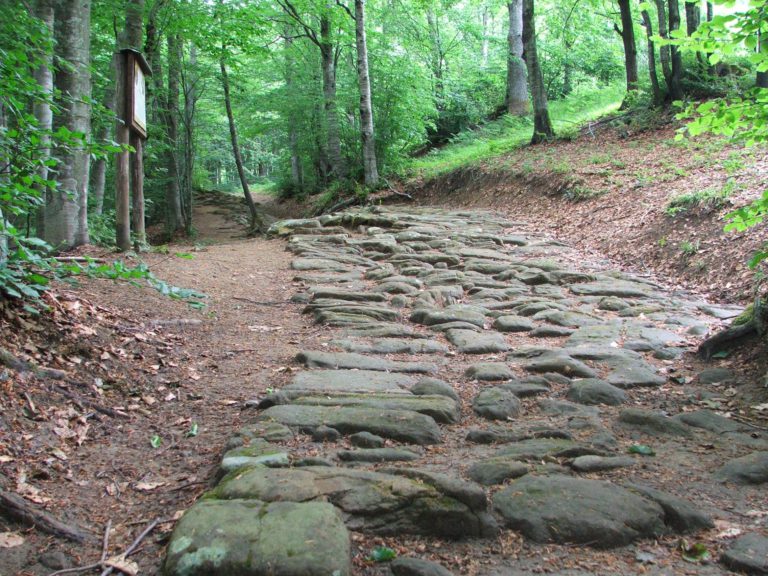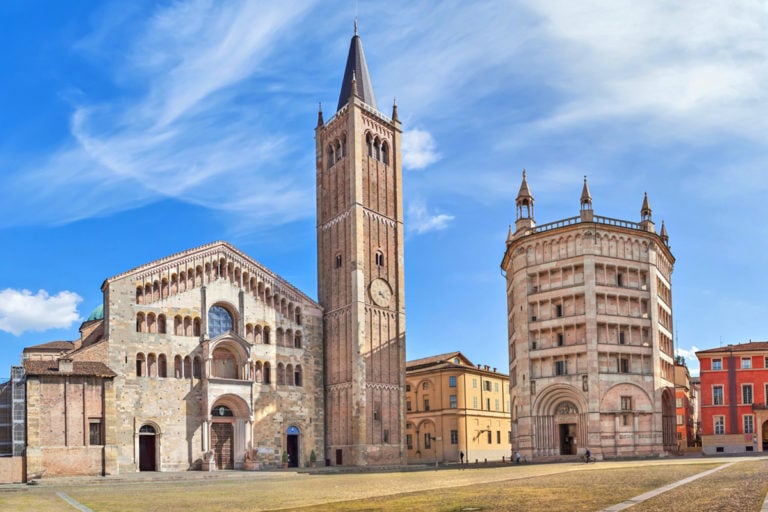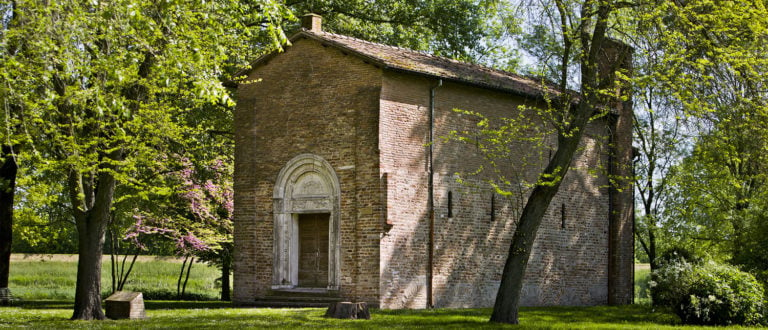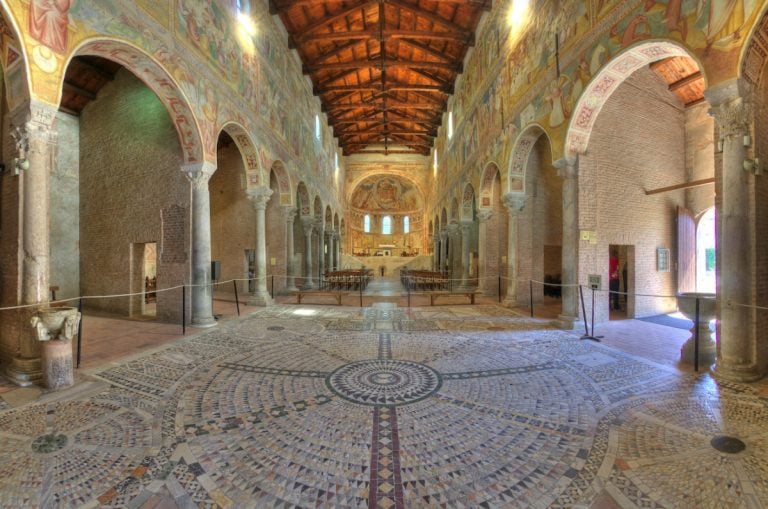Rely on your exertion and loosen up your arms, prepare your sight and soul to enjoy everything Mother Nature and Humankind have been able to create over the millennia. The secret is to slow down your existence and give yourself some time to relish the fruits.
Walks are not just simple tracks that marked land and time. They are cultural, natural and spiritual paths to start and consciously follow. They are travels across the world and soul that make us immerse into the flavours and colours of the places we cross, enjoying their beauty and hospitality and, most of all, they make us reach “another us”, other communities, other thoughts.
They are a journey inside a journey. On the one side, the eyes look at what surrounds us outside, on the other, they observe our inner part, reflecting on what is changing – or at least – is trying to.
The spiritual walks of Emilia-Romagna are plenty. From Piacenza to Rimini there are 21 old pilgrimage routes that support slow and passionate tourism.
Both a strong secular and religious feeling has been “paving” the heart of many pilgrims that visited the places of culture and worship along the trails.
For the pilgrims, once, these itineraries were a source of spirituality and at the same time the emblem of the culture of hospitality.
Today, they are the treasures on a map that leads to the soul of a land, the land of Emilia-Romagna, which is rich of artistic and cultural beauties, and dotted with hermitages, monasteries, sanctuaries and places of worship that have been welcoming people during their long pilgrimages.
Abbey of Chiaravalle della Colomba (Piacenza)
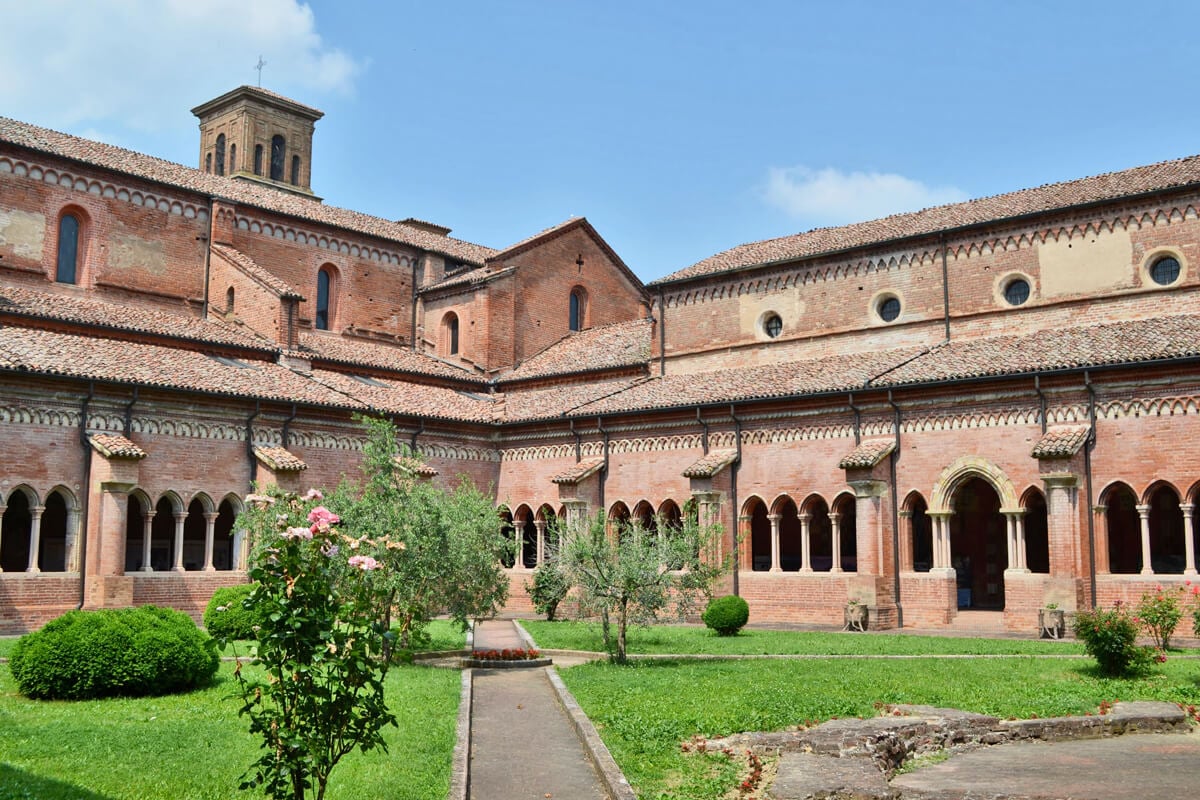
Place: Chiaravalle (Alseno, Piacenza).
Year of establishment: 11th century.
Related way: Via Francigena (viefrancigene.org).
Curiosities: the abbey is famous for the “Infiorata del Corpus Domini” (May/June), an event when an astounding carpet of flowers is laid down along the central nave of the basilica.
Wonderful monument of medieval art, the Abbey of Chiaravalle della Colomba was founded in 1136 by San Bernardo in Chiaravalle, following the bishop of Piacenza Arduino’s request.
According to the Benedictine rule “Ora et labora” (pray and work), the monks gave life to an exquisite complex that was ended over the subsequent two centuries.
The 14th century-cloister is noteworthy for its perfect shapes and measured architecture, a crossroad between Romanesque and Gothic art.
It is part of the trail of Via Francigena and it offers pilgrims hospitality and refreshments with a kitchen and some beds.
Sanctuary of Beata Vergine della Ghiara (Reggio Emilia)
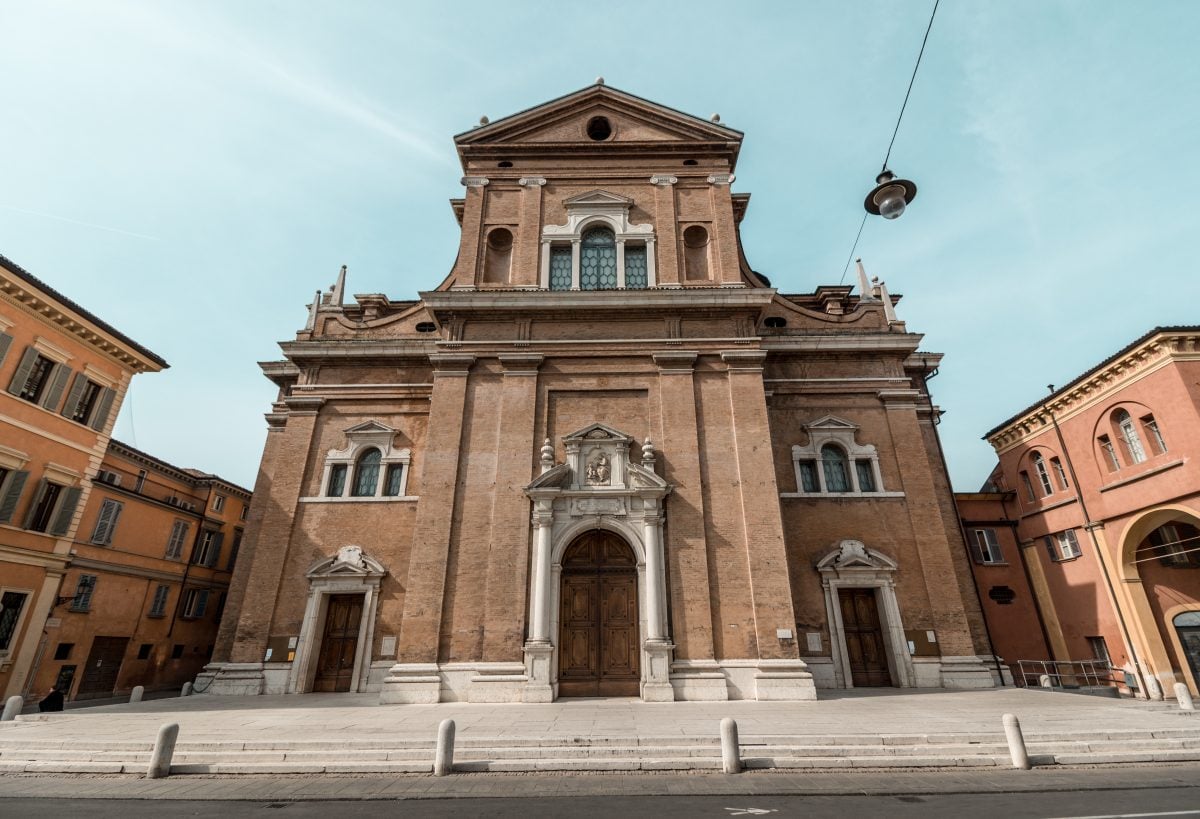
Place: Reggio nell’Emilia.
Year of establishment: 16th century.
Related way: Matilde’s Way of the Holy Face (www.viamatildica.it)
Curiosities: he church was built thanks to the donations given by the local community after the fresco of the Virgin that is preserved inside the sanctuary was involved in a miraculous event (today the fresco is known as Madonna della Ghiara).
Lively place of worship and a masterpiece of art, deeply attached to the community of Reggio Emilia, the sanctuary towers over the city centre, in an area called “della Ghiara” or “della Giarra”, which means a rocky place.
It was designed by Alessandro Balbi from Ferrara (1597), and it preserves the highest expressions of paintings dating back to the early Emilian 17th century.
Abbey of San Silvestro (Modena)
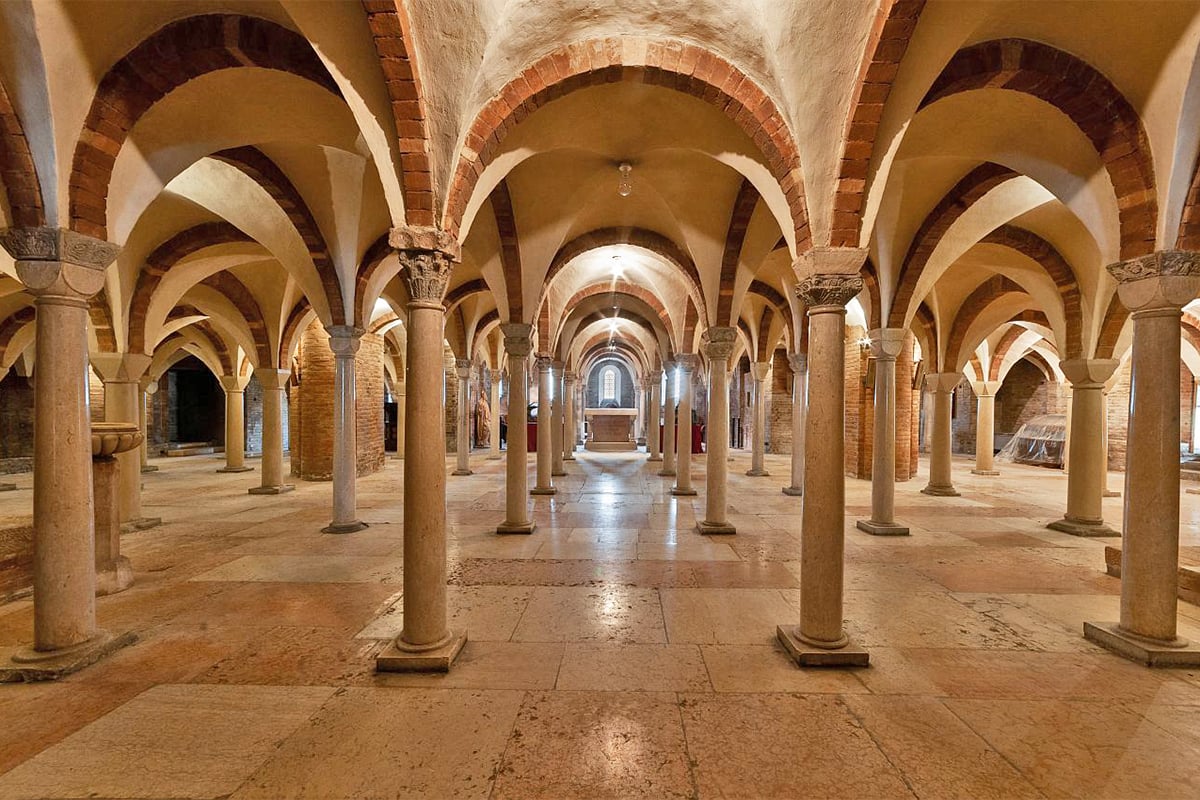
Place: Nonantola (Modena).
Year of establishment: 12th century.
Related way: Romea Nonantolana Way / The Romea Germanica Imperiale Way (www.viaromeanonantolana.org) and Romea Strata Longobarda Nonantolana Way (romeastrata.it).
Curiosities: the decorations of the portal of the church were created by the students of Wiligelmo, one of the most important Romanesque sculptors in Italy, who also created the reliefs of the Cathedral of Modena.
Founded in the 8th century by Langobard Duke Astolfo, the Abbey of San Silvestro was one of the most important pilgrimage places in Europe during the Middle Ages.
Together with the church, the crypt and the frescoes of its refectory, it is an amazing example of Langobardic-Romanesque architecture stratified over the centuries.
It was a meeting place for popes, emperors, and high priests and it hosted one of the most beautiful libraries of the Middle Ages with official documents and parchments of Charlemagne, Matilda of Tuscany and Frederick I.
Because of his leading role as regards the spiritual and political events of that times, the abbey was a departure and meeting point of two important spiritual trails that led to Rome: Romea Nonantolana Way, which takes the name from the abbey, and Romea Strata Longobarda Nonantolana Way, which started from Central-western Europe.
After the long restoration following the 2012 earthquake, the abbey returned to its former glory becoming the site of an extraordinary Jubilee Holy Year granted directly by Pope Francis, which will end on December 31st, 2019.
Sanctuary of Madonna di San Luca (Bologna)
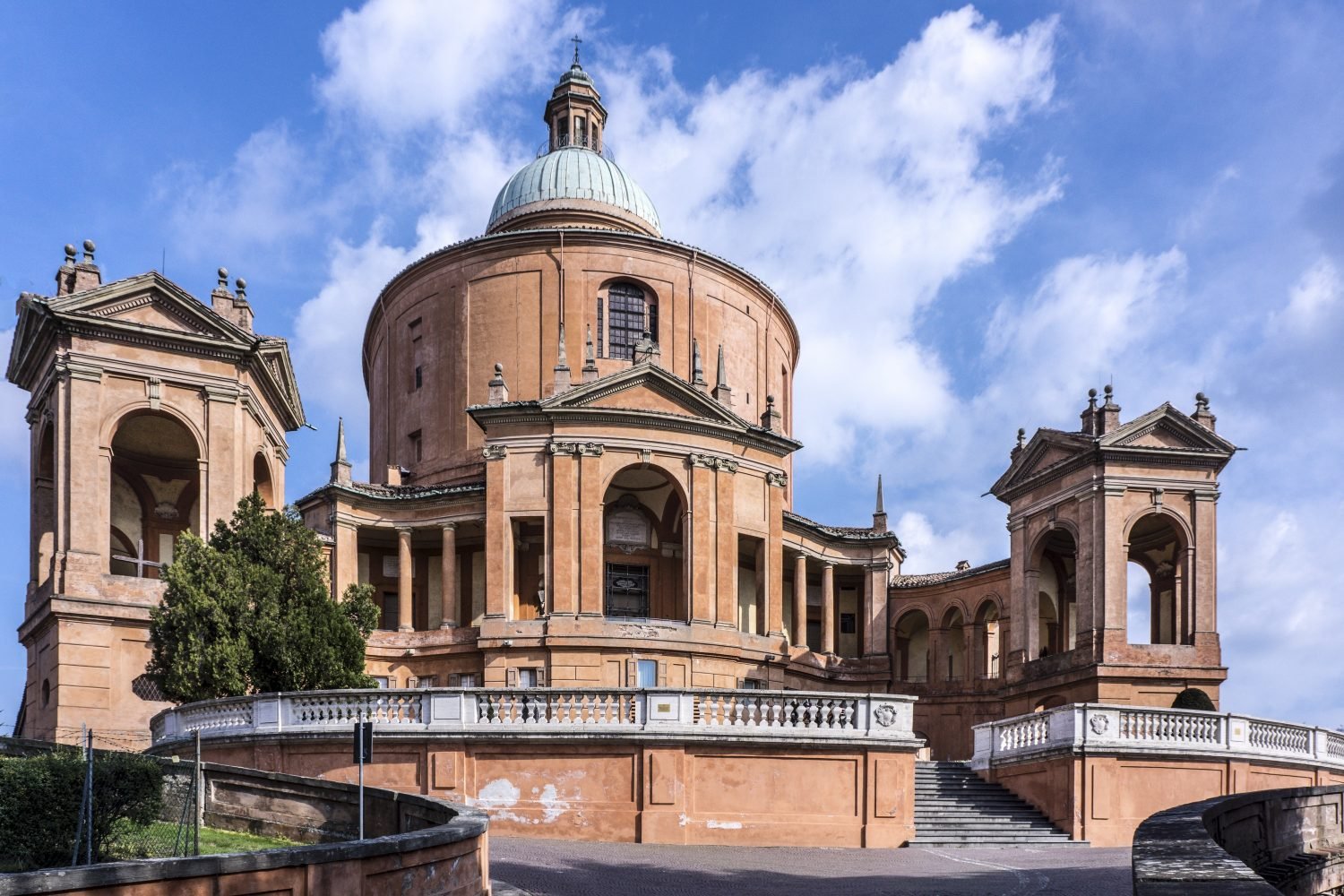
Place: Bologna.
Year of establishment: 15th century.
Related way: Wool and Silk Road (viadellalanaedellaseta.com) / Way of the Gods (viadeglidei.it) / St. Anthony’s Way (ilcamminodisantantonio.it) / Via Mater Dei (viamaterdei.it).
Curiosities: the sanctuary is connected to Bologna through the famous portico of San Luca, which is, with its 600 arcades and 4 km width, the longest in the world.
A reassuring reference point for all the people of Bologna, the Sanctuary of Madonna di San Luca rises up on the hill called Colle Della Guardia (280 mt a.s.l.).
Its first church was built during the 12th century with the aim of safeguarding the little Byzantine icon of the Virgin with Child that, according to tradition, was brought there from Constantinople.
Because of the spiritual importance and the geographical position on the first slopes of the Tuscan-Emilian Apennines, over the centuries the sanctuary was a reference point for many pilgrims who were travelling across Northern Italy along important streets like the old Way of the Gods, the commercial Wool and Silk Road and the spiritual St. Anthony’s Way and Via Mater Dei.
Abbey of Pomposa (Ferrara)
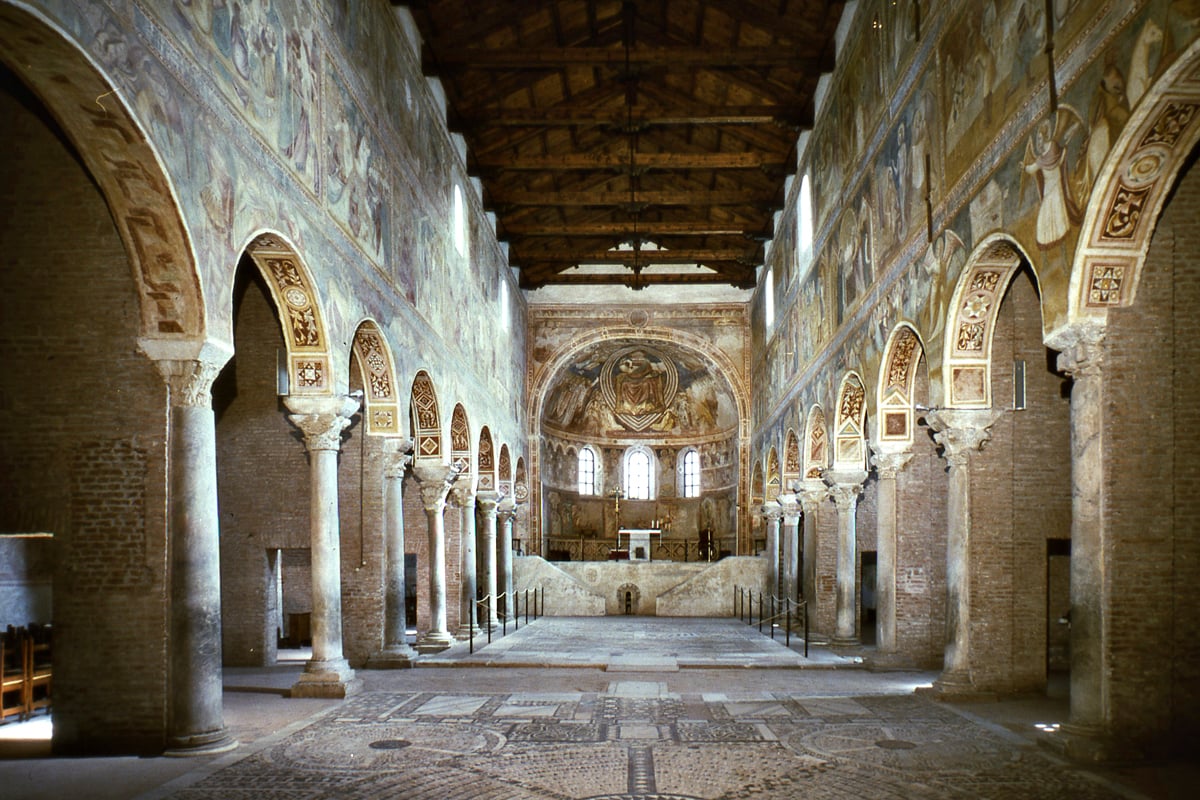
Place: Codigoro (Ferrara).
Year of establishment: 6th-7th century onwards.
Related way: Viae Misericordiae (viaemisericordiae.altervista.org) / Romea Germanica Way (viaromeagermanica.com).
Curiosities: from the 11th century, in this abbey, the Benedictine monk Guido d’Arezzo invented the modern music notation, the four-line staff notation, the predecessor of the current staff.
Proceeding along the state road Romea that connects Ravenna to Mestre, the high bell tower of Abbey of Pomposa suddenly bursts out at the end of the Po Delta Park. In a Ravenna-Byzantine style, its origins date back between the 6th and 7th-century a.D.
Towards 1000 a.D. the complex reached its apex, turning in one of the most important monasteries in Northern-central Italy, welcoming guests such as Dante Alighieri and Pier Damiani, and collecting art treasures.
The frescoes of the basilica inspired by the style of Giotto are of outstanding beauty, as well as the amazing mosaic floors with marble inlays dating back between the 6th and 12th century.
Basilica of San Vicinio (Forlì/Cesena)
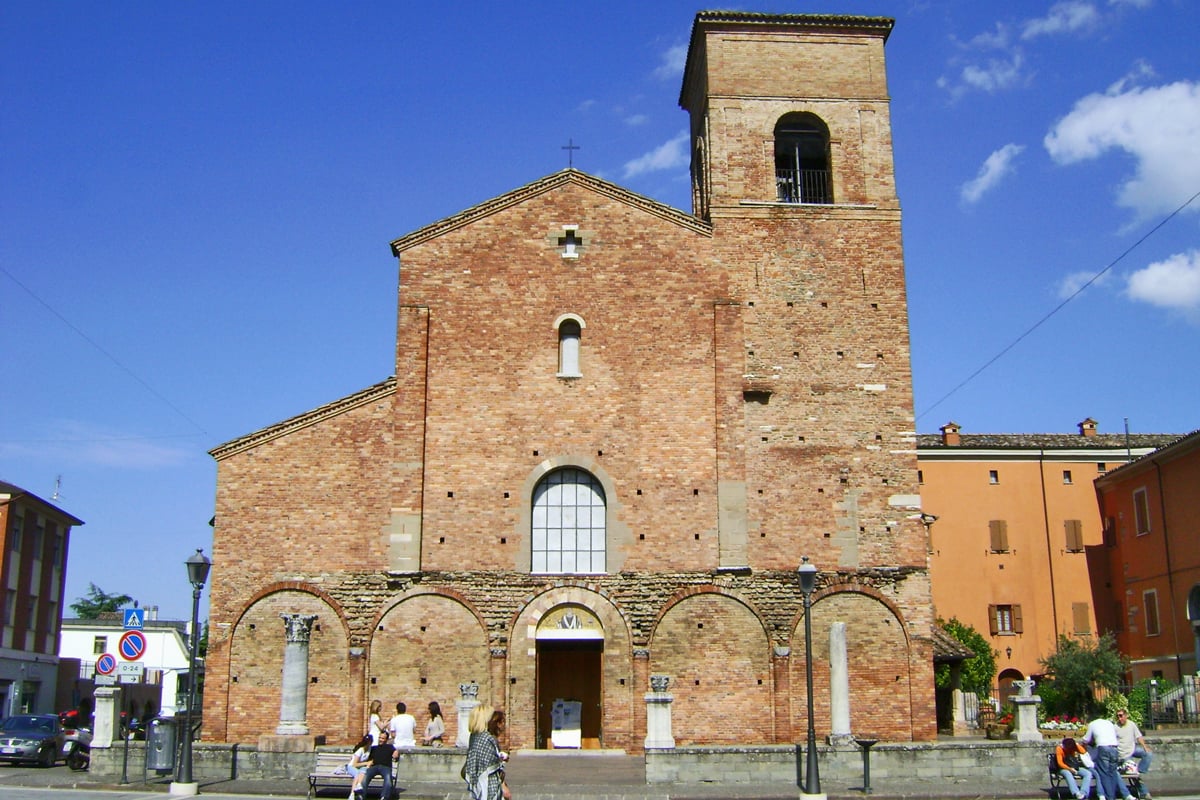
Place: Sarsina (Forlì/Cesena).
Year of establishment: 10th-11th century.
Related way: St. Vicinius’ Way (camminodisanvicinio.it).
Curiosities: every year, many persons arrive in the little town of Sarsina, fatherland to the Roman playwright Plautus, to take part in the rite of San Vicinio.
Standing on one of the oldest historical walks in Italy, the Basilica of San Vicinio owes its name to the first bishop of Sarsina, a fundamental figure in the process of evangelism of this part of Romagna during the first centuries after Christ.
Solemn and austere, the building was erected towards the year one thousand in a perfect Romanesque style and was later modified and rebuilt.
Inside, it preserves the collar that, according to tradition, Vicinio wore tied to a stone while praying.
Still today, thousands of worshippers arrive at the basilica to receive the blessing from the collar that is said to be able to cast out evil from the soul.
Hermitage of Montepaolo
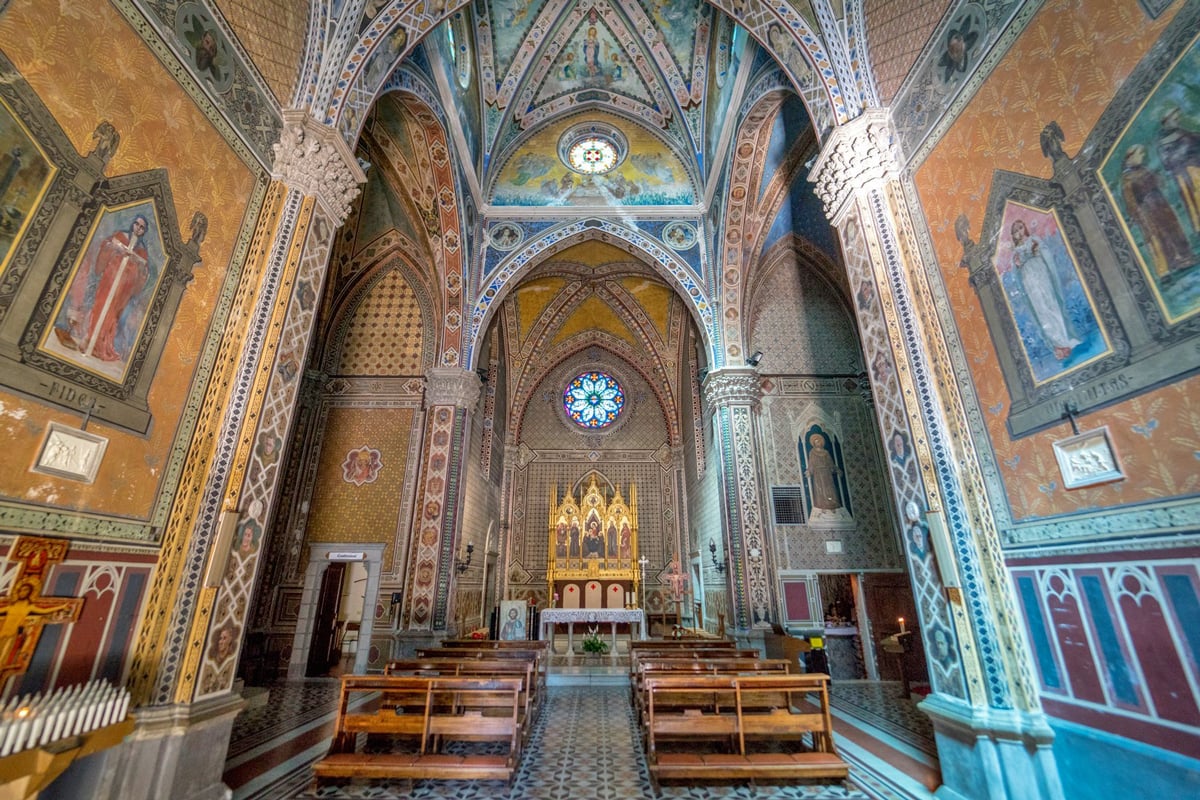
Place: Dovadola (Forlì/Cesena).
Year of establishment: the beginning of the 20th century.
Related way: Assisi Way (camminodiassisi.it) / St. Anthony’s Way (ilcamminodisantantonio.org).
Curiosities: near the sanctuary, following the “Path of hope”, you reach a little chapel that recalls the place where the Saint used to go to pray.
Hidden in the heart of the territory of Forlì, the hermitage of Montepaolo is the most important sanctuary in Emilia-Romagna that is dedicated to Saint Anthony from Padua: between 1221 and 1222, one of the greatest saints of Christianity lived here for more than 15 months.
Isolated amidst nature, the building preserves the relics of Anthony, which were directly taken from his body preserved in the Basilica of Padua.
The church was built at the beginning of the 20th century in a neo-Gothic style and is at the same time a fundamental stop both for the St. Anthony’s Way that leads to the Franciscan Sanctuary Della Verna and for the Assisi Way that starts right here.
Sanctuary of Santa Maria delle Grazie
Place: Covignano di Rimini (Rimini).
Year of establishment: 15th century with several subsequent rebuilding works.
Related way: St. Francis Way from Rimini to La Verna (camminosanfrancescoriminilaverna.it).
Curiosities: the sanctuary consists of two little churches gathered in a unique building. The oldest church dates back to the beginning of the 12th century, whereas the second one was built in the mid-16th century.
With the sea of Rimini as a backdrop, on the top of the hills of Covignano, the Sanctuary of Santa Maria delle Grazie originates from a miraculous intervention related to the Blessed Virgin.
Today, many works can be admired here: the decorations of the wooden ceiling, a crucifix of the 14th century-grotesque school, wooden crucifixes of the 17th and 18th century, a canvas by Rodrìguez and the painting of Annunziata by Ottaviano Nelli from Gubbio (1415).
If you are passionate about religious tourism, we invite you to visit two important websites:
→ www.camminiemiliaromagna.it
All the spiritual walks and pilgrimage routes of Emilia-Romagna with its 21 paths
→ www.monasteriemiliaromagna.it
Abbeys, cathedrals, monasteries: the treasures of the 15 Emilia-Romagna’s dioceses
Author

Davide Marino
Davide Marino was born archaeologist but ended up doing other things. Rational – but not methodic, slow – but passionate. A young enthusiast with grey hair
You may also like
Route Planner: sloways in Emilia Romagna
by Walter Manni /// March 6, 2018
The medieval Abbey of Chiaravalle della Colomba
by Davide Marino /// September 25, 2020

Interested in our newsletter?
Every first of the month, an email (in Italian) with selected contents and upcoming events.
The Most Beautiful Churches and Cathedrals in Emilia-Romagna
by Davide Marino /// September 20, 2018
The most beautiful Parish Churches in Emilia-Romagna
by Davide Marino /// February 28, 2019
